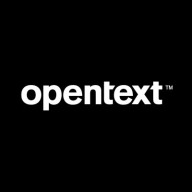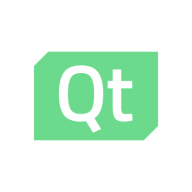

OpenText UFT One and Qt Squish are competitive tools in the automated testing landscape. OpenText UFT One has the upper hand in enterprises requiring broad application support and extensive integration capabilities, whereas Qt Squish is preferred for its cross-platform support and effective GUI application testing.
Features: OpenText UFT One integrates easily with diverse systems, offers comprehensive regression testing, and provides strong support for multiple technologies. Qt Squish supports automated test creation with popular scripting languages, excels in identifying complex GUI elements, and provides robust cross-platform functionality.
Room for Improvement: OpenText UFT One can enhance performance in complex deployments, reduce the complexity of its initial setup, and improve resource usage efficiency. Qt Squish may advance object recognition for non-Qt applications, streamline its scripting interface, and enhance integration with complementary testing tools.
Ease of Deployment and Customer Service: OpenText UFT One's deployment is complex due to its rich feature set, yet it provides solid documentation and support. Qt Squish, while simpler to deploy, focuses on offering rapid customer service responses with technical expertise.
Pricing and ROI: OpenText UFT One involves higher setup costs but delivers significant ROI for larger organizations utilizing its expansive features. Qt Squish has a lower cost of entry, making it appealing for smaller projects, particularly those focused on GUI applications, promising a compelling ROI without extensive infrastructure dependencies.
The development time using UFT can be cut down into half as compared to coding from scratch.
Automation is done very fast, leading to improvements in the QA process and reducing the time needed for test automation.
We can easily achieve a return on investment in one, two, or three years.
For the part that has been automated in Qt, not everything is suitable for automation.
Organizations can't wait for this lengthy process, especially when they are under pressure with their timelines.
Support cases are easily created and attended to promptly, depending on urgency.
The technical support is rated eight out of ten.
The tool can be installed on all computers used by developers or test automation engineers.
With one license, just one user or one test scenario can be run at a time.
One of the key stability issues was that Windows would consume memory without releasing it, leading to regression testing crashes.
We frequently encountered stability issues when the browser dependency caused Windows to consume memory without releasing it, leading to crashes during regression testing.
If it could move closer to a no-code or low-code solution, it might dominate the market again.
Incorporating behavior-driven development tests would enhance the capabilities of UFT One.
If you want to run it for different versions of the software, then you need the Qt version of Java.
There are many open-source tools with no cost, and there are no-code tools that are less expensive than UFT.
It's cheaper than Tricentis Tosca but more expensive than some others.
The pricing or licensing policy of OpenText is a bit expensive, however, it's one of the best solutions in the market.
For the developer license, it is about $5200 a year.
UFT supports Oracle, SAP, PeopleSoft, and other non-web applications, making automation feasible.
OpenText UFT One offered valuable features by allowing us to build up libraries to streamline repetitive tasks, making scripting much easier.
The object repository is one of the best in the market, allowing creation of a repository useful for all tests.
For the parts that have been automated in Qt, not everything is suitable for automation.


Our AI-powered functional testing tool accelerates test automation. It works across desktop, web, mobile, mainframe, composite, and packaged enterprise-grade applications.
Read white paper
Take the complexity out of testing graphical user interfaces (GUIs) and human-machine interfaces (HMIs) – even in the face of product evolution and safety-critical applications.
We monitor all Test Automation Tools reviews to prevent fraudulent reviews and keep review quality high. We do not post reviews by company employees or direct competitors. We validate each review for authenticity via cross-reference with LinkedIn, and personal follow-up with the reviewer when necessary.